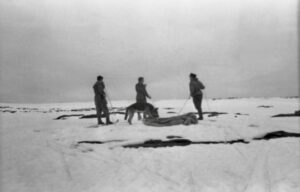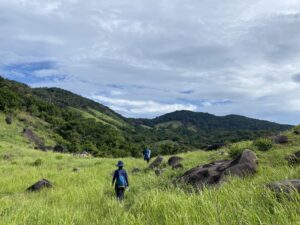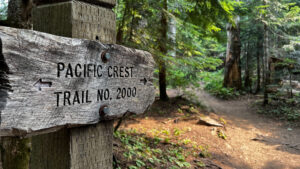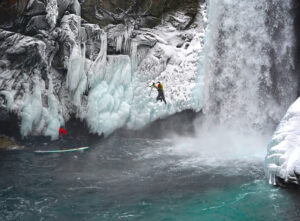When we think of the Appalachian Trail, we tend to limit it to the eastern United States. But many don’t know that this 3,540km network, which traditionally stretches from Georgia to Maine, actually continues all the way through Canada, across the Atlantic, to Europe and North Africa!
Geological background
The Appalachian Trail, which traverses 14 U.S. states, takes an average of seven months to hike. But since the 1990s, long-distance enthusiasts have lobbied to extend the Appalachian Trail internationally, thereby adding several thousand kilometers to the challenge.
They base their reasoning on recent geological evidence. Over 335 million years ago, several large landmasses combined into the supercontinent Pangea. The collision of two of the landmasses, Laurasia and Gondwana, formed the Central Pangean Mountains.
The eroded remnants of these ancient mountains still exist in eastern North America, Western Europe, and Morocco. These include the Appalachians, the Scottish Highlands, the Anti-Atlas Mountains, and others in Western Europe and Scandinavia.

International Appalachian Trail sign. Photo: Danita Delimont/Shutterstock
Since the Appalachians belong to this very ancient, much bigger, and extensive mountain network, authorities added some of these other ranges to the popular trail.

International Appalachian Trail sign in Quebec’s ChicChoc Mountains. Photo: Jerry Kobalenko
The International Appalachian Trail begins
In the 1990s, Dick Anderson conceived the idea of the Appalachian Trail going international. Joseph Brennan, formerly from the Maine Department of Conservation, helped to launch the project in 1994. It became a reality in 2002.
The Trail’s extension, referred to as the International Appalachian Trail, continues from Mount Katahdin, Maine into Canada, through New Brunswick and Quebec’s Gaspé Peninsula. It then passes through part of Prince Edward Island and ends at Crow Head in Newfoundland.
However, this is not the end of the Newfoundland/Labrador leg. According to newfoundlandandlabrador.com, authorities hope to open three new sections through the Blow Me Down Mountains, Lewis Hills, Parsons Pond, Stephenville, and Corner Brook.

Map showing the Great Pangean Mountains. Photo: Tasa Graphic Arts
In 2009, further discussions suggested incorporating still more trails, this time from Wales, Scotland, Northern Ireland, and Ireland. In 2010, many trails throughout the British Isles joined the International Appalachian Trail. According to the IAT’s official website, all trails in England and Wales belong to the International Appalachian Trail.
The Scotland section passes through West Highland Way, then continues north to Fort William to the North Sea. In Ireland and Northern Ireland, it winds through the scenic County Donegal, Giant’s Causeway, the Slieve Liag sea cliffs, and Kelley’s Bridge in Northern Ireland. Later, the Faroe Islands, Denmark, Sweden, Norway, Iceland, the Netherlands, and France joined the IAT network.

The Appalachian Mountains in Sharp Top, Virginia. Photo: Isaac Wendland/Shutterstock
In 2011, Spain, Portugal, and Morocco were also included. In Spain, the trail follows the Tagus River at Alcántara to Villuercas Ibores Kara Geopark. Portugal’s Appalachian legacy is the Grand Roto de Muradal-Pangeia. Finally, in Morocco, the Anti-Atlas Mountains finally rejoin their ancient counterparts. The incorporation of all these countries has extended the trail to over 8,000km, more than double its U.S. length.
It is very possible that the Appalachian Trail will continue to extend and relive its ancient Pangean history. While the vision for the International Appalachian Trail is still in its early stages in some countries, organizations are working hard to include more trails into the network. Once completed and officially recognized, it could become the world’s longest and greatest trail.
Incredibly, no one has yet hiked the entire International Appalachian Trail. Most have taken an interest only in completing sections within individual countries. IAT trails in Canada and Ireland, especially, have gained popularity over the last few years.
It seems that the idea of an International Appalachian Trail has not yet taken root in the minds of many thru-hikers. Perhaps few realize that the Appalachian Trail extends internationally. But soon, inevitably, someone will become the first to take on this ancient trail.






